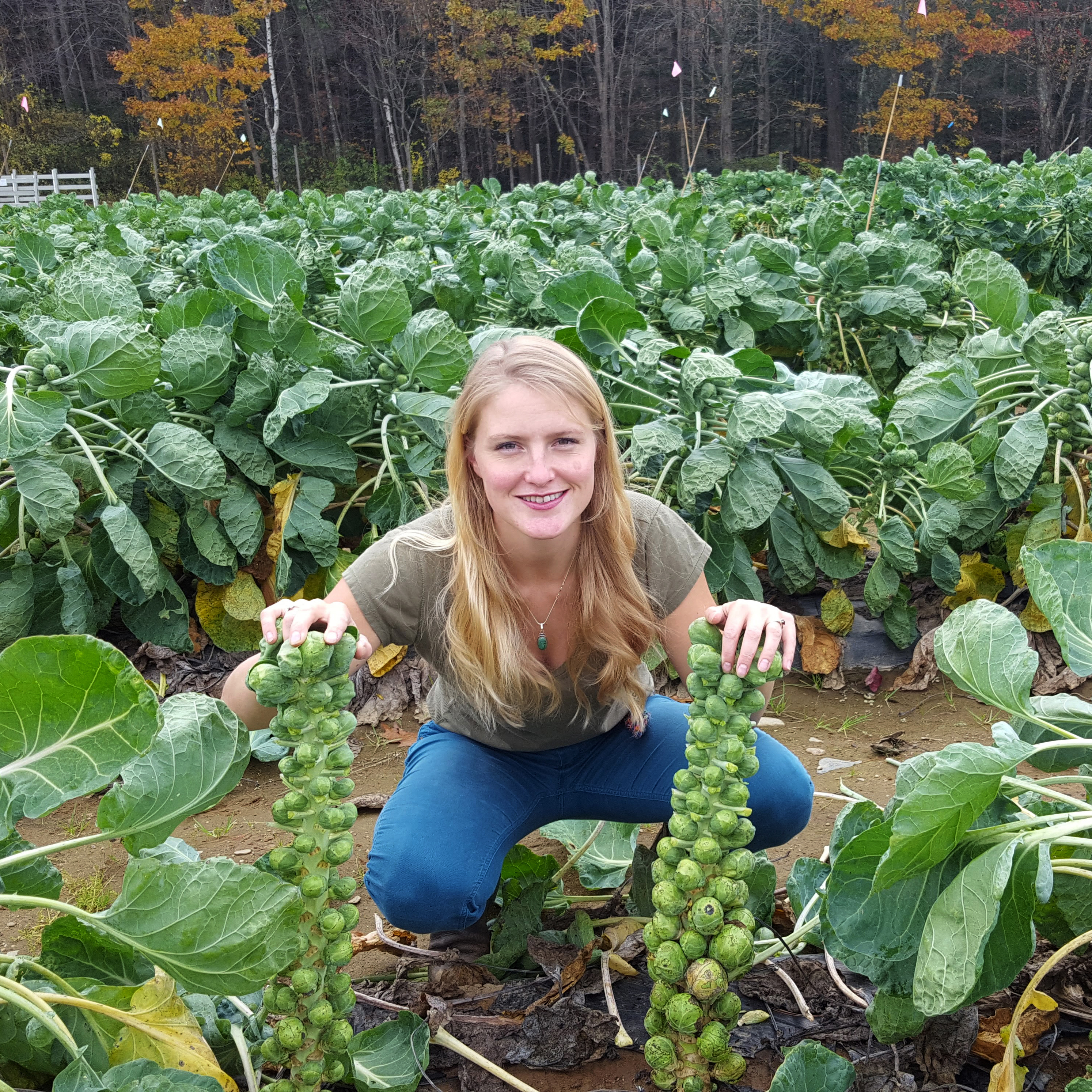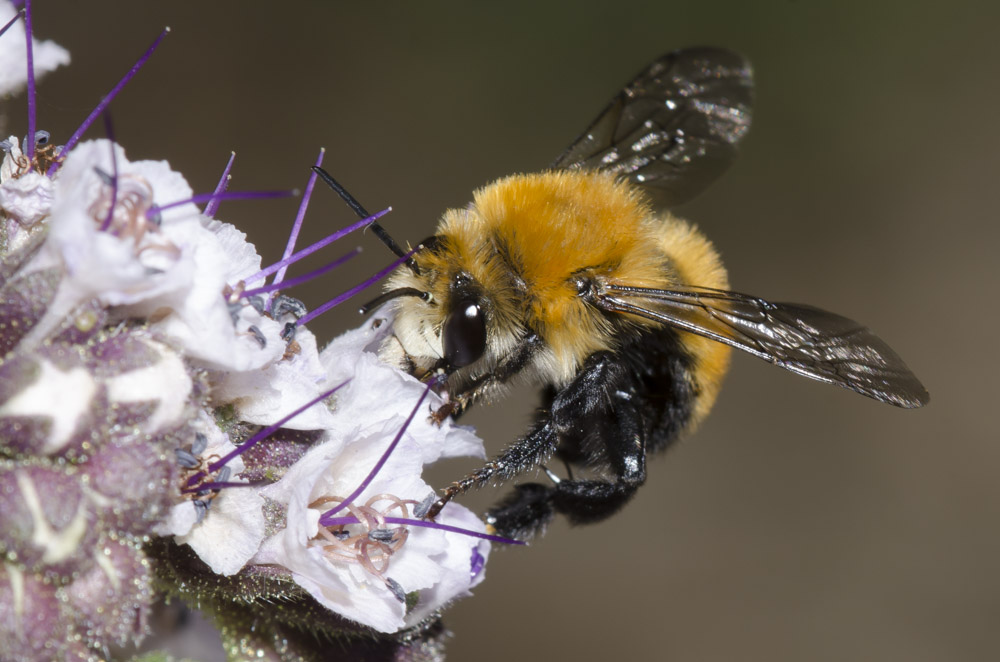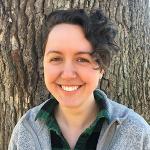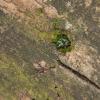Select monthly updates from our team of restoration ecologists, entomologists, plant ecologists, and researchers.
The Xerces Society manages the largest pollinator conservation program in the world. We work with farmers, gardeners, land managers, agency staff, and others to create habitat for bees, butterflies, and beneficial insects—and hundreds of thousands of acres of flower-rich habitat have been planted. We also offer certifications: Bee Better Certification for farmers and food companies who are committed to supporting pollinator conservation in agricultural lands, and Bee City USA and Bee Campus USA certifications for cities and colleges dedicated to making the world safer for pollinators.
With staff based in more than a dozen states, and offering a diverse array of expertise, it can be challenging to summarize the impactful work being done by our team of restoration ecologists, entomologists, plant ecologists, and researchers. Therefore, we have compiled select pollinator conservation program updates into monthly digests. For February, we are welcoming Alina Harris, who has filled our brand-new role of Integrated Pest and Pollinator Management Specialist and NRCS Partner Biologist in New Hampshire, and looking ahead to our expanding role in New Mexico.
Meet Alina Harris, Our New Hire in New Hampshire
Jillian Vento-Feldman, Pollinator Program Administrator and Alina Harris, Pest and Pollinator Management Specialist and NRCS Partner Biologist

Tell us a little bit about your educational and career background, and how that led you to working with the Xerces Society.
I fell in love with agriculture when I traveled to Sweden and did work-trades on three diversified farms. I then earned my bachelor’s in sustainable agriculture and food production systems at the University of New Hampshire (UNH). During my studies I worked on three diversified farms in New England, and my passion for the land grew.
Upon graduation, I co-managed a vegetable, fruit, maple syrup, and lamb operation in NH with a fellow from Hawaii. After a couple years of farming in NH, we moved to HI where we lived on his off-the-grid family farm. His father managed and harvested the honeybee research hives at the University of Hawaii and would invite us along to learn from the researchers. I taught students the basics of farming at the University, and managed a diversified “living lab” of gardens.
Growers everywhere experience pests, and I have always been interested in holistic management strategies to reduce pesticide dependency. My research at UNH focused on management of cabbage aphid on Brussels sprouts, which is a persistent and economically damaging pest world-wide.
What is the coolest thing you learned about the cabbage aphid during your research? (...is there anything cool about the cabbage aphid?)
The cabbage aphid can reproduce asexually. This means that without mating, this pest can give birth, and with their rapid development time, they can complete multiple overlapping generations per year.
The coolest part of my research was seeing all of the natural enemies that attacked the cabbage aphid. In contrast to purchasing beneficial insects to release into an agro-ecosystem, flowering insectary plants can be planted as a food source and habitat, aimed to enhance populations of insects already present. We observed a variety of invertebrate natural enemies, including the larvae of syrphidae (syrphid flies) and cecidomyiidae (gall midges) which feed on aphids, and tiny braconid wasps that parasitize aphids.
Your position is an interesting collaboration between various partners—The Xerces Society, NRCS, and UNH Extension—what do you anticipate can come of this that wouldn't otherwise be possible?
UNH is a land grant university with active researchers. UNH Cooperative Extension disseminates research-based information to the community through online resources and in-person education programs. USDA-NRCS also supports growers and offers programs to eligible land owners to provide financial and technical assistance towards managing their land in ways that conserve natural resources.
The Xerces Pollinator Program staff work with the NRCS as partner biologists. Partner biologists work alongside NRCS conservation planners to provide technical expertise on conservation of invertebrates, such as habitat enhancement, guidance on pesticide protection, staff training, development of technical resources, education, and outreach. The partners have all been working with the agricultural community to effect change on the ground, protect biodiversity, promote productive and healthy harvests, and build resilience.
I will be a liaison between UNH Extension, NRCS, and Xerces. My position will increase capacity for planning and implementation of habitat practices for pollinators and beneficial insects in New England through Farm Bill programs. UNH Extension has long been a recognized resource for growers seeking help with Integrated Pest Management (IPM) strategies and a variety of other crop-production related topics. My position highlights an additional “P”, making it Integrated Pest and Pollinator Management (IPPM). By working together, we offer a diverse skill set to provide science-based solutions to complex agricultural issues, while mitigating the harmful effects of pesticides to pollinators and other invertebrates.
What inspires you to wake up and keep working towards conservation goals every day?
I feel incredibly lucky to collaborate with such bright minds working towards similar goals! Since I was a young child, I have felt passionately about protecting the land. Though invertebrate declines are undoubtedly depressing, I am constantly inspired in my position. As a doer, I find refuge in knowing that I spend my work week contributing to solutions and implementing them on the ground. Having energetic, talented, and supportive colleagues is a major contributor!
What is your favorite native NH plant for supporting beneficial insects?
I am a fan of Zizia aurea (Golden Alexander). It’s an herbaceous perennial that provides early forage, which is an important time to support natural enemies. It has shallow nectaries that allow small beneficial wasps and flies to access nectar. An abundant species of syrphid flies (Toxomerus marginatus) have been documented to visit Zizia aurea flowers and their larvae prey on crop pests such as aphids. Zizia aurea is a food source for a variety of bees, moths, and is a host plant for the black swallowtail butterfly.
Xerces Expands Pollinator Conservation Efforts in New Mexico
Emily May, Pollinator Conservation Specialist
The desert Southwest is one of the most species-rich areas of North America for bees and other pollinators. Over 1,000 species of bees—more than a quarter of the 3,600 species native to the United States and Canada—make their homes in New Mexico alone. Xerces is expanding efforts to build and sustain healthy, diverse populations of native pollinators in this critical region.
In general, bee populations are limited by the flowering resources found within flying distance of their nests. Many smaller wild bees—like sweat bees, mining bees, and yellow-faced bees—may only travel a few hundred feet to find pollen and nectar to supply their nests. What these bees need is an interconnected matrix of high-quality, pesticide-free habitat that allows for movement of pollinators between small patches of flowers in urban areas and larger, intact natural areas. Our efforts in New Mexico center on building climate-resilient, connected pollinator habitat in the urban population hubs of Albuquerque and Santa Fe. These habitat efforts are designed to allow movement of bees between backyard gardens and surrounding open spaces and natural areas.

In June 2019, I co-organized and presented a short course on Planting for Pollinators at Rio Grande Nature Center State Park in Albuquerque in collaboration with The Nature Conservancy of New Mexico. The workshop included a presentation on New Mexico’s bee species from resident bee expert Dr. Olivia Carril and a field walk co-led by Dr. Carril and Xerces Society Executive Director Scott Hoffman Black, where participants learned about native bees and butterflies.
In September, I held two workshops with partners at New Mexico State University for agricultural audiences in northern and central New Mexico. Each featured a field tour of native wildflowers currently being studied for their attractiveness to native bees and beneficial insects. The test plots will help us understand how these wildflowers might be planted for beneficial use on farms and alongside acequias, communal irrigation canals that are a central feature of water management in the state.
This year, we will be significantly expanding our outreach and partnership efforts to build habitat for pollinators in Santa Fe and Albuquerque with the addition of a new full-time Xerces staff member in New Mexico. In addition to building local partnerships for urban habitat expansion, the new Southwest Pollinator Conservation Specialist will help organize a series of workshops and trainings on planting for pollinators, grazing for pollinators, and monarch conservation around New Mexico. We look forward to deepening our work to conserve invertebrates and their habitat in the diverse and unique ecoregions of the desert Southwest.
Further Reading
Learn more about the Xerces Society’s Pollinator Conservation Program




